This post may contain affiliate links. Please read our disclosure policy.
After making lemon frosting for over 10 years (and learning the hard way), I’ve figured out how to prevent separation, achieve a silky-smooth texture, and adjust sweetness to taste. Room-temperature butter is key for the perfect consistency, letting the mixer run on low at the end removes air bubbles, and you can tweak the sugar-to-lemon ratio for your ideal flavor. My goal is to help you skip the trial and error so you get smooth, flavorful frosting every time!
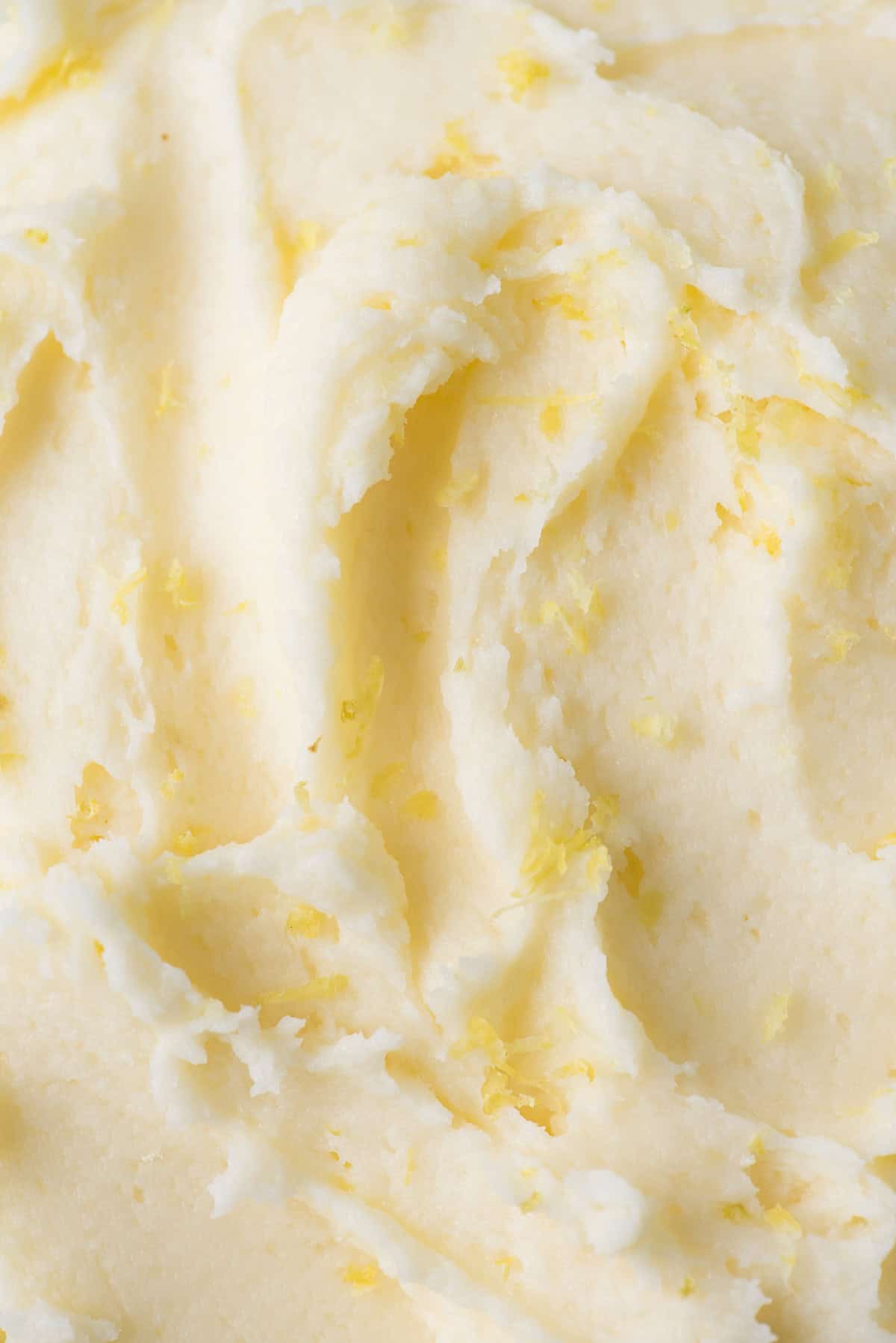
The most perfect icing I have ever made!
-Debra
You will love this Lemon Buttercream Frosting
I’ve been making lemon frosting for over 10 years, and I’ve learned a lot—mostly through trial and error. I’ve had my fair share of frosting fails, including the time I added way too much lemon juice, and it completely separated!
But that’s how I figured out an important trick: when the frosting looks like it’s breaking, don’t panic—just keep beating it, and it will come back together beautifully.
Beyond that, there are three other key things I’ve learned that can make or break a good buttercream: the importance of room-temperature butter, how to get rid of pesky air bubbles, and how to adjust the sweetness to your liking.
First, butter temperature. If your butter is too cold, your frosting won’t whip up properly; if it’s too soft, it can turn greasy. I’ve tested this so many times that I can tell just by pressing a finger into the butter whether it’s ready. It should be soft enough to indent but still hold its shape—that’s the sweet spot for perfect frosting.
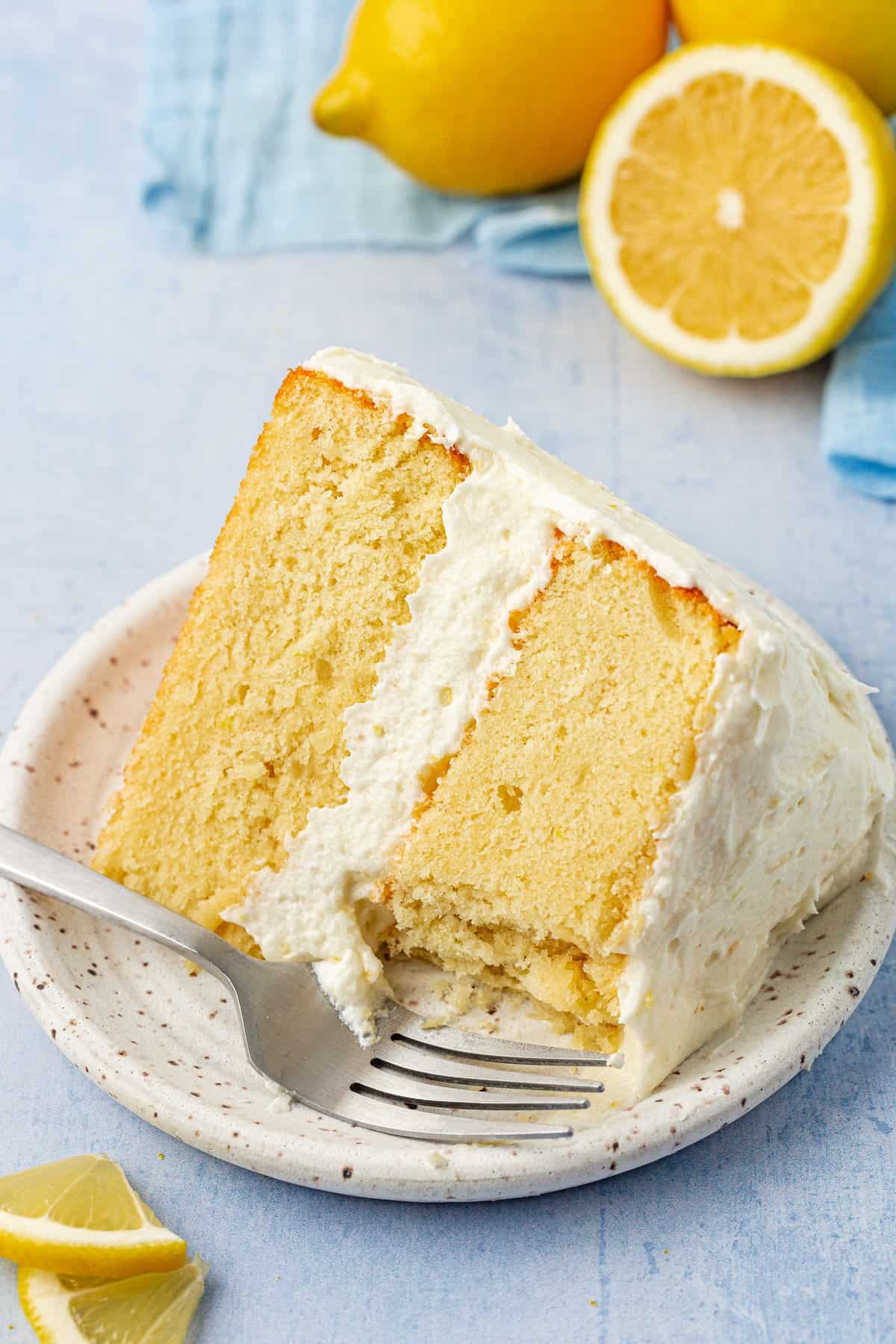
Next, air bubbles. Ever made frosting and ended up with a texture that looks rough instead of silky-smooth? I’ve been there too. The fix is simple: once everything is mixed, let the mixer run on low for a minute or two. This helps smooth everything out so your frosting looks as good as it tastes.
And then there’s sweetness. This one’s all personal preference! Some people love a super sweet frosting, while others prefer it a little more balanced. The best part about making your own is that you get to decide. Add more powdered sugar if you like it sweeter, or balance it with a little extra lemon juice if you want more tang.
I’ve tested and tweaked my lemon frosting recipe so many times, all with the goal of making it foolproof for you. I want you to feel confident when you make it—no separation, no air bubbles, just smooth, flavorful frosting that’s easy to work with and tastes amazing. If I can help you skip the mistakes I made early on, then I’ve done my job.
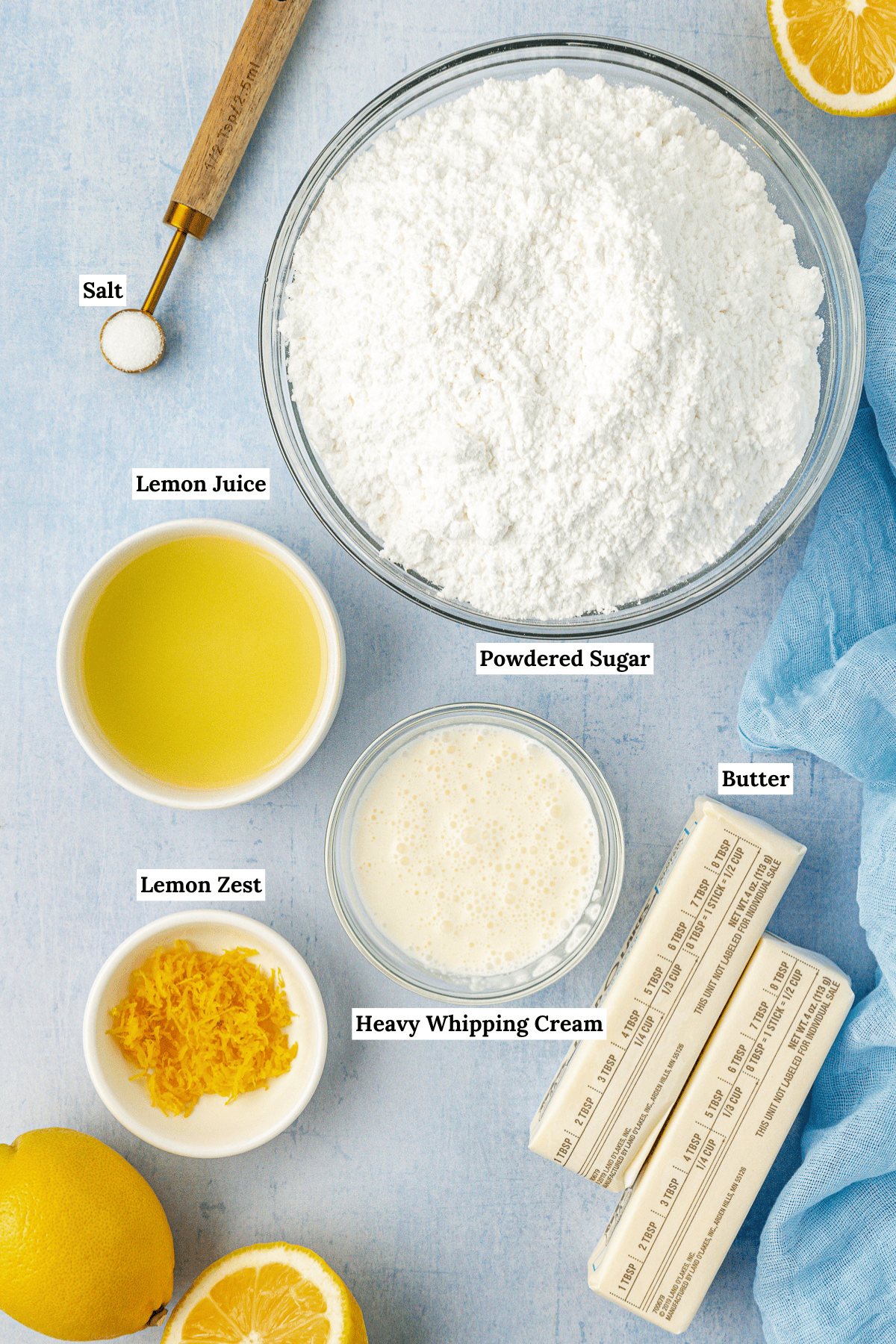
Lemon Frosting Recipe Ingredients
Just a handful of simple ingredients makes the best lemon frosting. Get the full recipe in the recipe card below. Here is a summary of what you’ll need:
- Unsalted butter, room temperature
- Powdered sugar
- Fresh lemon juice
- Heavy whipping cream, milk can be substituted
- Salt
- Lemon zest, optional
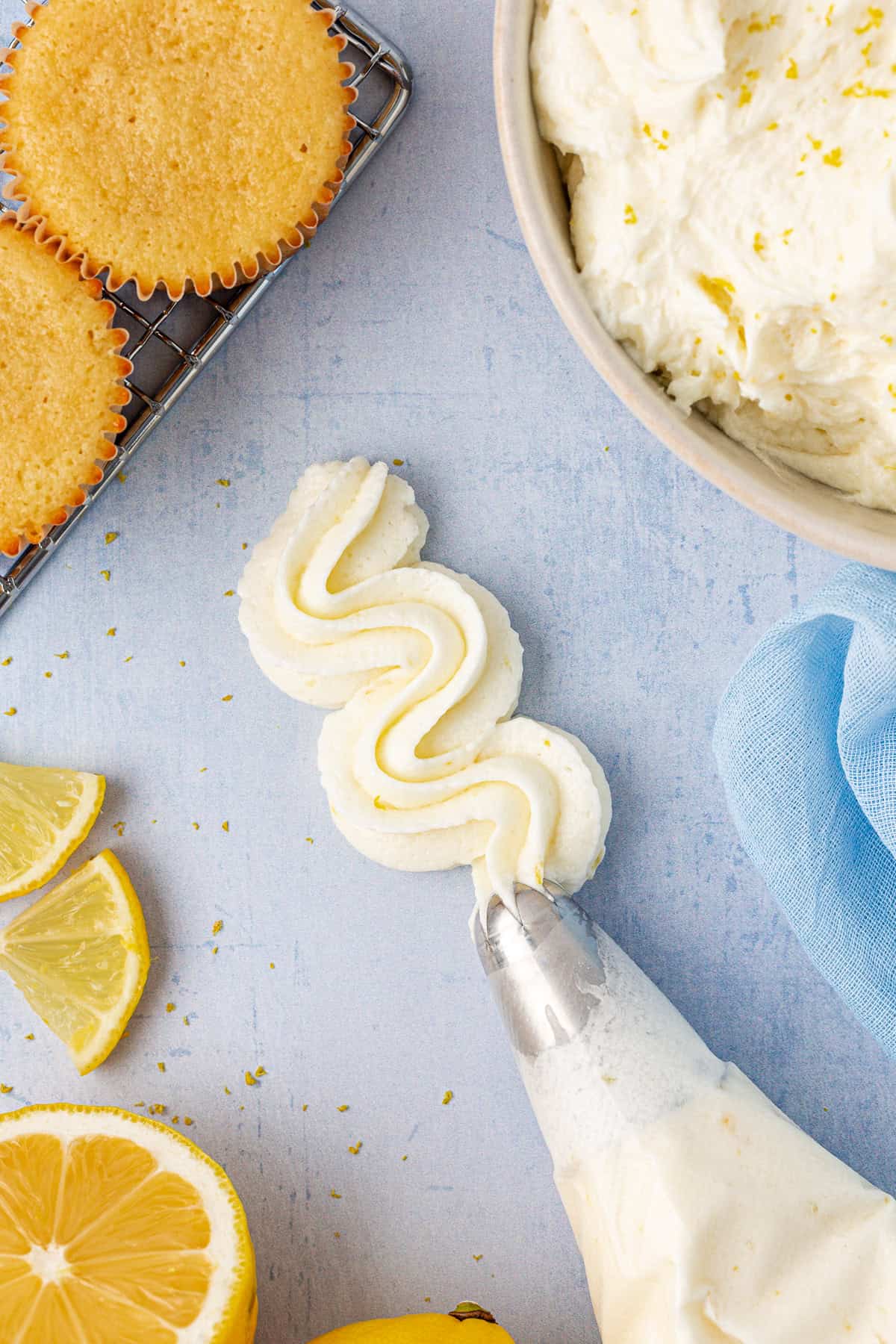
How to Make Lemon Frosting
Once you see how easy my process is for making homemade frosting, you’ll never go back to store-bought frosting. Here are the simple steps:
- Beat butter. In a stand mixer or using a hand mixer, beat the butter on medium speed for 1-2 minutes, until light and fluffy.
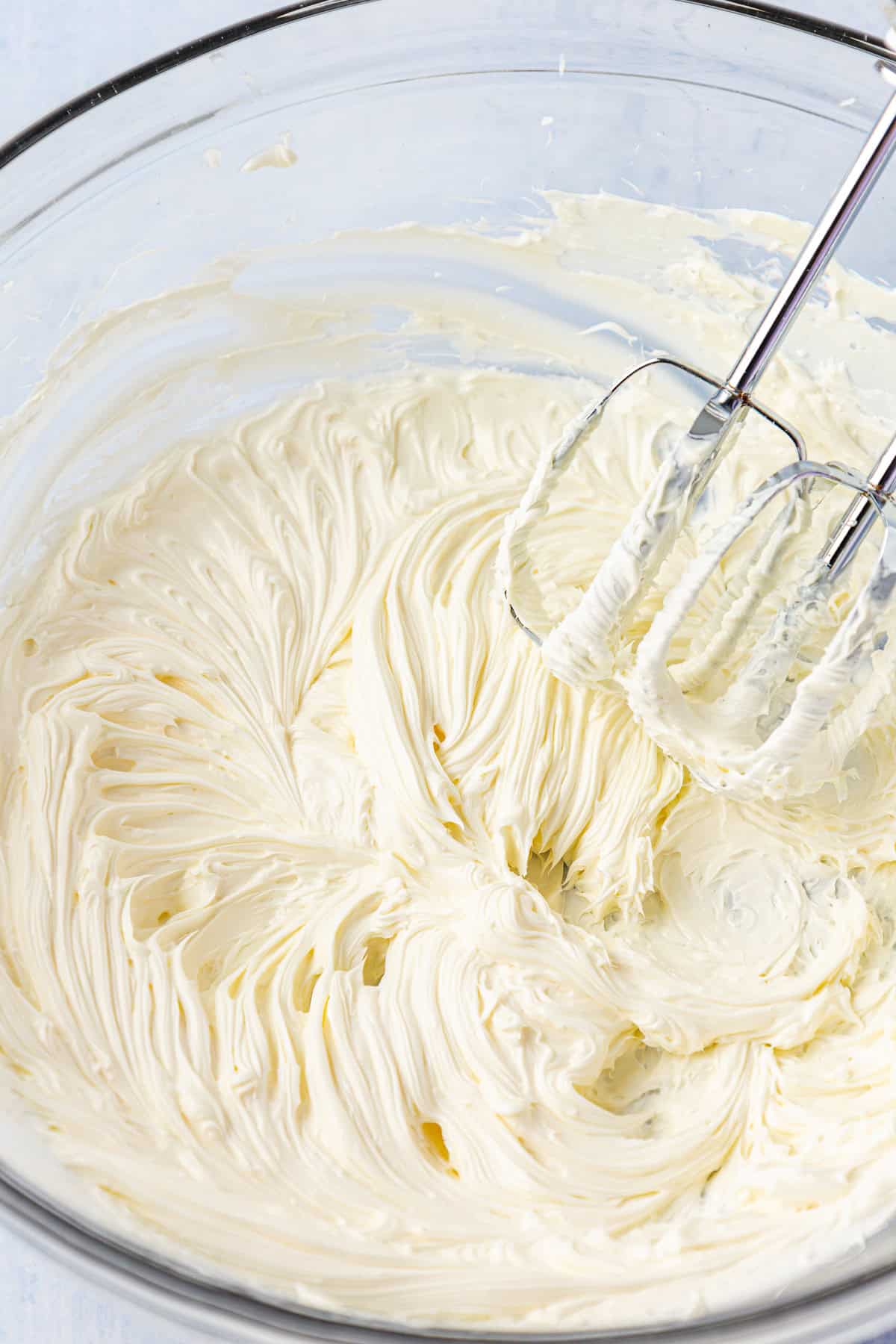
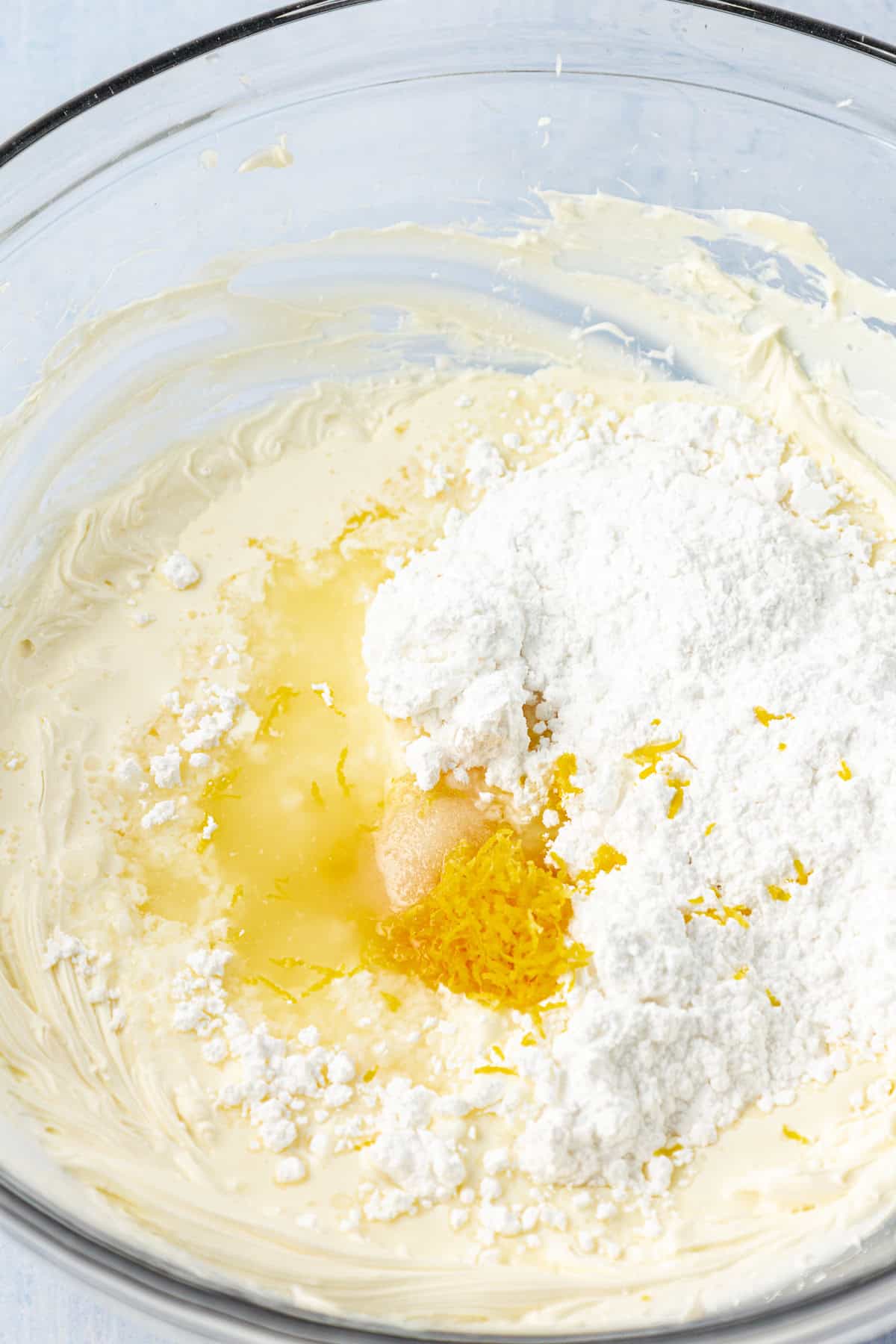
- Mix in remaining ingredients. Gradually add 3 ½ cups of powdered sugar, lemon juice, heavy whipping cream, salt and the lemon zest, mixing on low until combined. Increase the speed to high and beat for 2-3 minutes. Adjust the sweetness by adding more powdered sugar if desired. If it’s too thick, thin with 2-4 additional teaspoons of heavy cream.
- Use and storage. Use right away on cupcakes or cake. Additionally, cover and store in the refrigerator for up to 1 week or in the freezer for up to 3 months. After freezing, let it thaw in the refrigerator, once cold and no longer frozen, move to the counter and allow it to come to room temperature. Before using, beat the frosting for 30-60 seconds to restore its creamy texture. If it’s still too stiff, add a small amount of milk or heavy cream and mix until smooth.
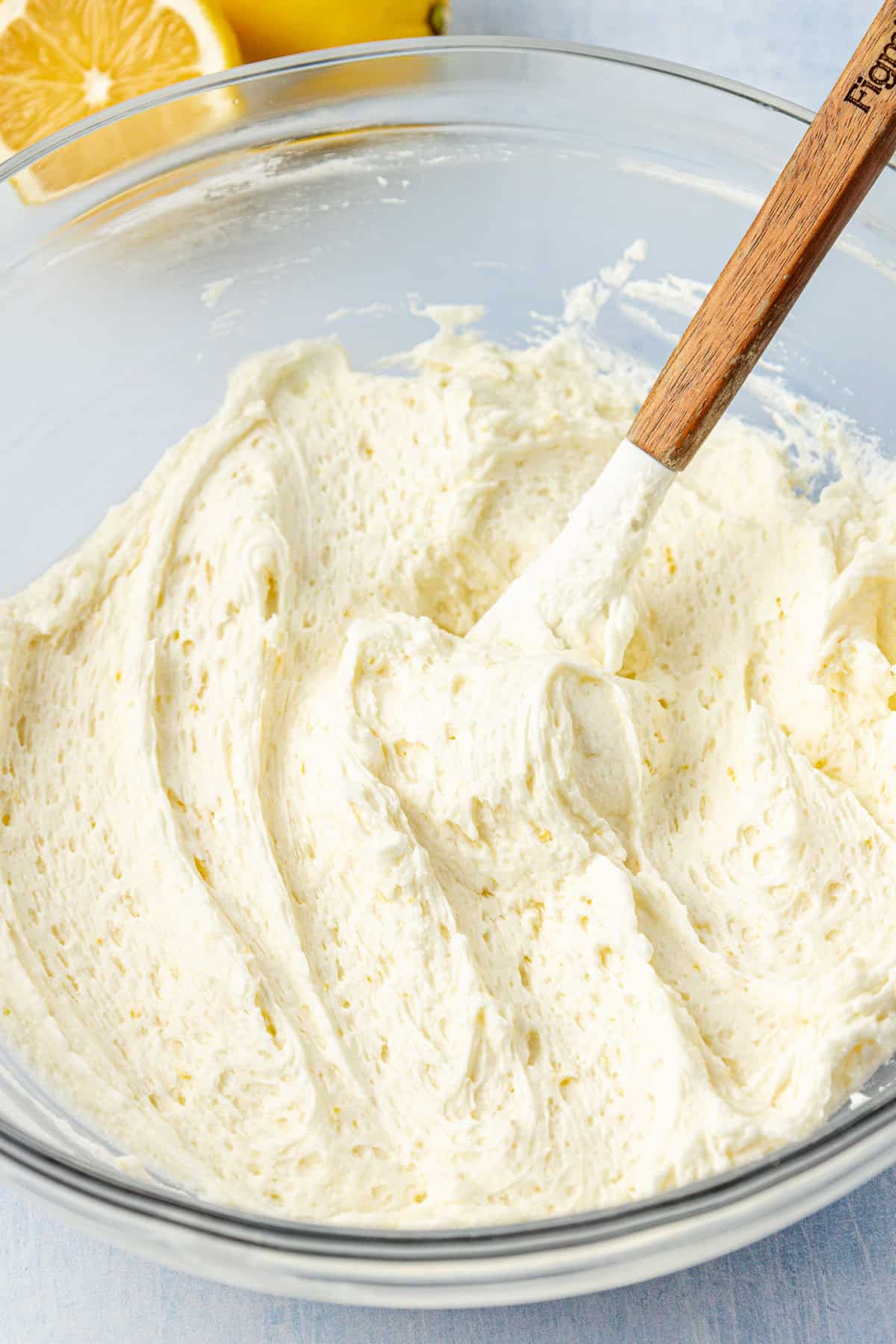
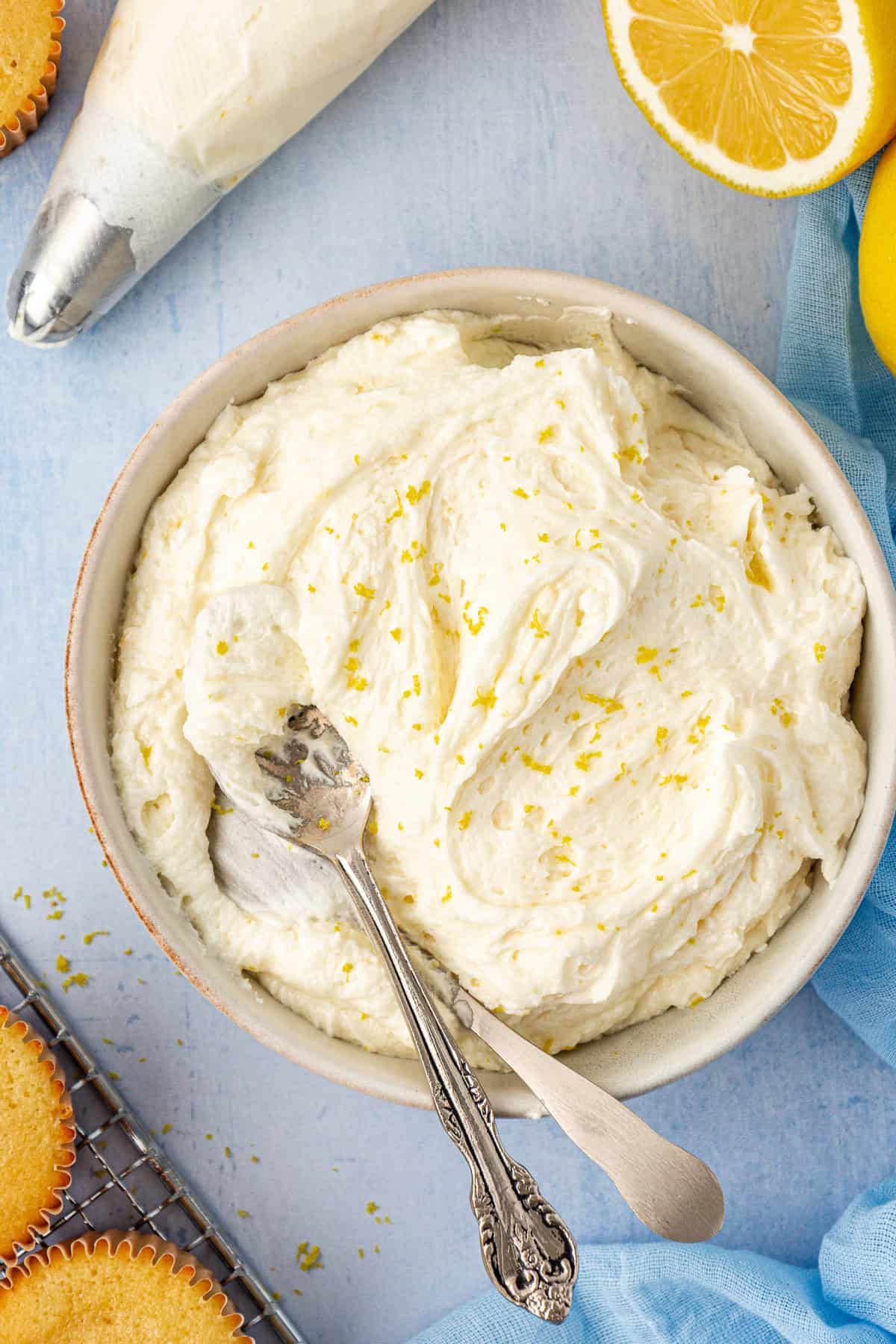
Lemon Frosting Recipe Variations
- Butter: You can use salted butter instead of unsalted, but then you’ll need to omit the additional salt in the recipe.
- Lemon flavor: For a stronger lemon flavor, add lemon oil or extract. Avoid adding extra lemon juice, as it will thin the frosting, making it too runny to hold its shape.
Tips for perfect Lemon Cake Frosting
For best results, follow these tips:
- Use room temperature butter: Room temperature butter should be between 63 and 68 degrees. It should be cool to the touch and you should be able to leave a fingerprint on it, like the butter has a little give. The butter should not look melted or greasy at all.
- How to fix broken buttercream: Lemon frosting can look curdled if you add too much lemon juice or if the ingredients are too cold. To fix curdled lemon frosting, start by adding 1/4 cup powdered sugar to the frosting and beat with a mixer. If the frosting still looks curdled, add an additional 1/4 cup powdered sugar. You can also place the frosting in a warm place (near a window) for 10 minutes, then mix again with a mixer.
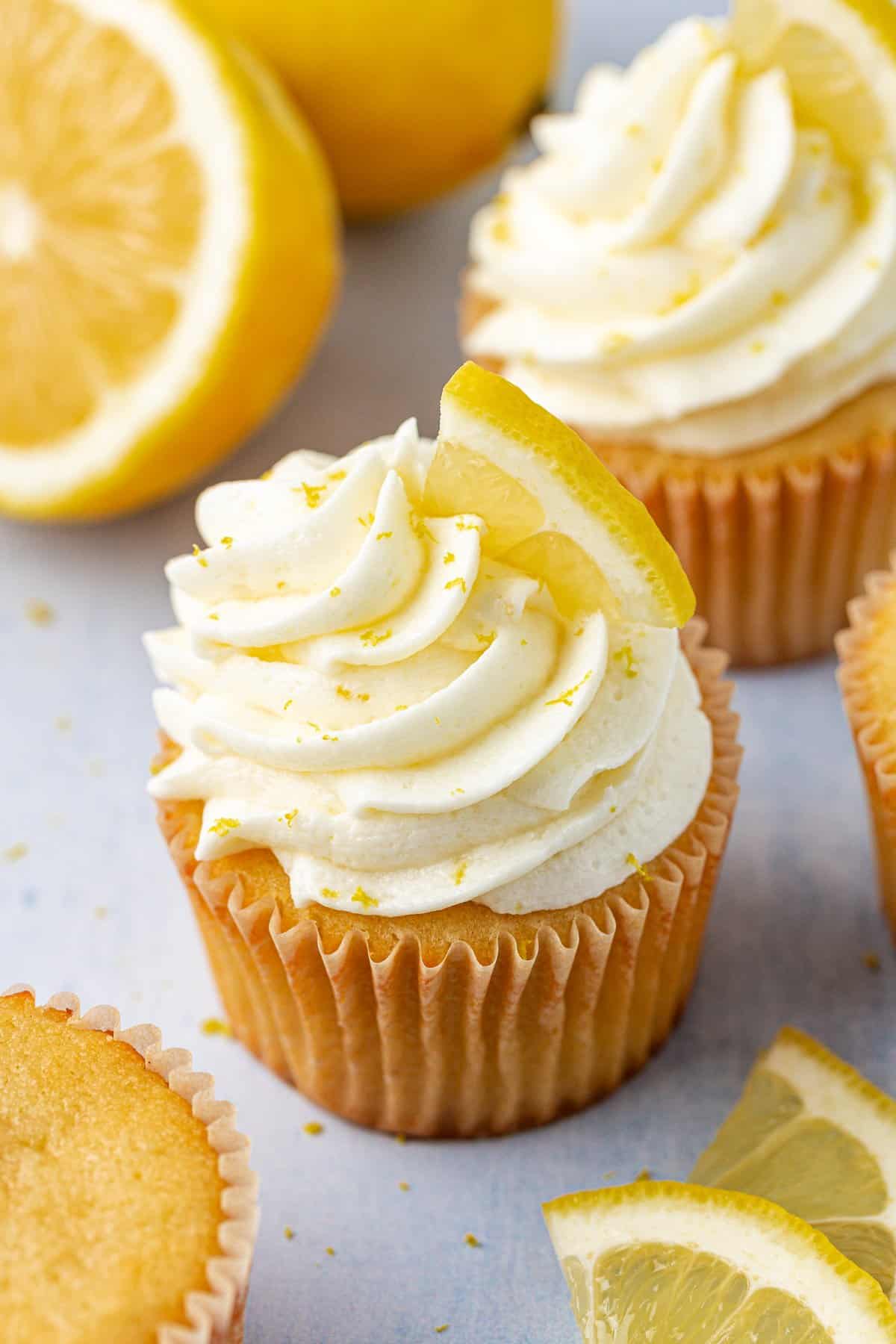
How to Store Lemon Cake Frosting
Cover and store leftover frosting in the refrigerator for up to 1 week.
Can you freeze lemon frosting?
Yes, all types of buttercream frosting can be frozen. Place the frosting in a plastic freezer bag, squeezing out as much air as possible before sealing. It will keep in the freezer for up to 3 months. To use, let it thaw in the refrigerator, once cold and no longer frozen, move to the counter and allow it to come to room temperature. Before using, beat the frosting for 30-60 seconds to restore its creamy texture. If it’s still too stiff, add a small amount of milk or heavy cream and mix until smooth.
Does buttercream need to be refrigerated?
Buttercream can be kept at room temperature for up to 3 days and doesn’t require refrigeration. For longer storage, transfer it to an airtight container and refrigerate for up to 2 weeks. Before using, rewhip with a mixer to restore its smooth texture.
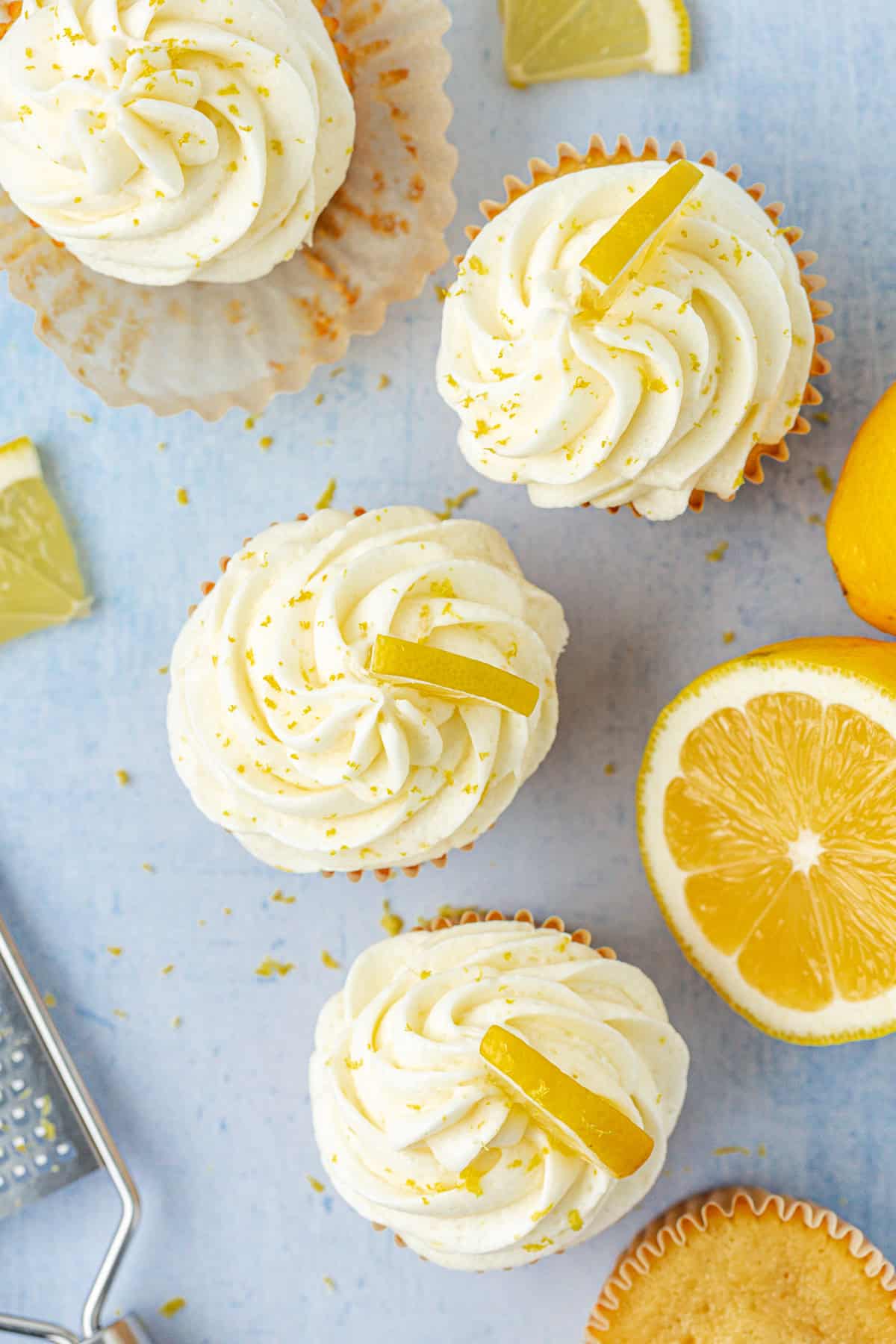
How to use Lemon Buttercream Frosting
There are so many ways you can use this frosting. Here are some ideas:
- Cupcakes or cake – Bring fresh lemon flavor to a layer cake or extra lemon flavor to a lemon cake or lemon cupcakes.
- Vanilla Cupcakes
- Strawberry Shortcake Cupcakes – Frost with lemon frosting and top with fresh strawberries.
- Sugar Cookies – Regular sugar cookies or lemon sugar cookies.
- Lemon Bars – Add a thin layer of frosting for extra sweetness.
- Lemon Scones
- Pound Cake – Use with traditional pound cake or lemon pound cake.
- Crepes – Use as a filling with fresh berries.
- Waffle or Pancake Spread – Use instead of syrup for a creamy topping on waffles or pancakes.
- Muffin Spread – Spread onto lemon muffins for extra flavor.
Lemon Buttercream FAQs
This frosting recipe is an American buttercream.
This recipe makes enough frosting to frost a 9×13 inch cake, a two layer 8 inch cake or 24 cupcakes.
Add a drop of yellow food coloring for a bright yellow lemon colored frosting.
Air bubbles form when whipping the frosting, which is a necessary step in making buttercream! But you can reduce the amount of air bubbles by beating the frosting on low speed for a minute or by hand mixing the frosting. You are essentially pushing out the air bubbles.
Icing is generally made with powdered sugar and a liquid, while buttercream is made with powdered sugar and butter. Icing is typically thinner and poured or drizzled over baked goods while buttercream is thick and can be piped onto baked goods.
When you first add the lemon juice to the butter mixture, it might look like the mixture is separating, but continue to beat the frosting until it’s well emulsified.
If you over whip buttercream frosting you will start to see large air pockets form which can affect the texture and appearance of your frosting. To fix this, use a spatula and gently mix the frosting by hand. Mixing by hand will smash the air pockets, leaving a smooth texture.
More Frosting Recipes
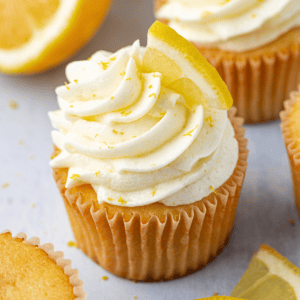
Tap stars to rate!
Lemon Frosting Recipe
Ingredients
- 1 cup (226g) unsalted butter, room temperature
- 3 ½-4 ½ cups (395-510g) powdered sugar
- 2 Tbsp fresh lemon juice
- 2 Tbsp heavy whipping cream, milk can be substituted
- ½ tsp salt
- 2 tsp 1 lemon lemon zest, optional

Instructions
- In a stand mixer or using a hand mixer, beat the butter on medium speed for 1-2 minutes, until light and fluffy.1 cup (226g) unsalted butter
- Gradually add 3 ½ cups of powdered sugar, lemon juice, heavy whipping cream, salt and the lemon zest, mixing on low until combined. Increase the speed to high and beat for 2-3 minutes. Adjust the sweetness by adding more powdered sugar if desired. If it’s too thick, thin with 2-4 additional teaspoons of heavy cream.3 ½-4 ½ cups (395-510g) powdered sugar, 2 Tbsp fresh lemon juice, 2 Tbsp heavy whipping cream, ½ tsp salt, 2 tsp 1 lemon lemon zest, optional
- Use right away on cupcakes or cake. Additionally, cover and store in the refrigerator for up to 1 week or in the freezer for up to 3 months. After freezing, let it thaw in the refrigerator, once cold and no longer frozen, move to the counter and allow it to come to room temperature. Before using, beat the frosting for 30-60 seconds to restore its creamy texture. If it’s still too stiff, add a small amount of milk or heavy cream and mix until smooth.
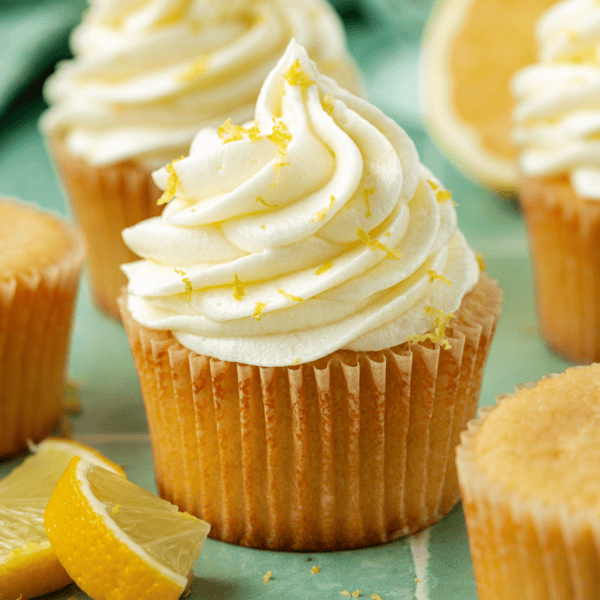
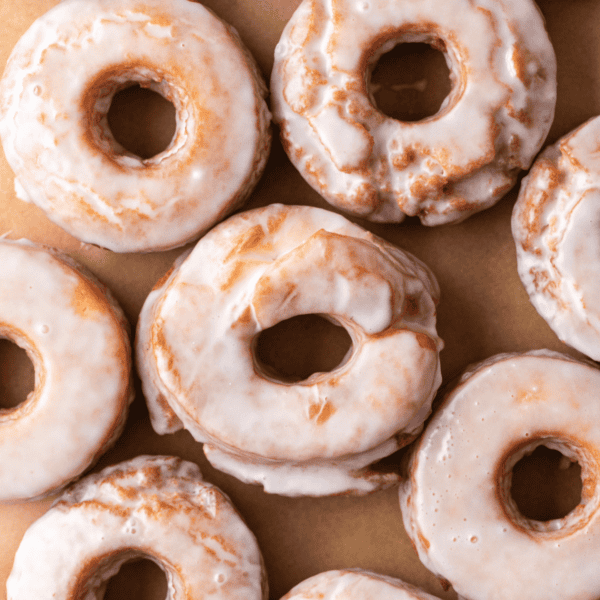
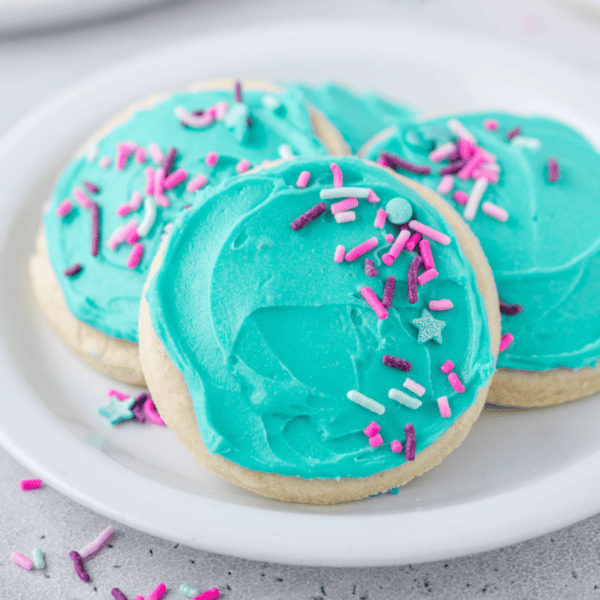







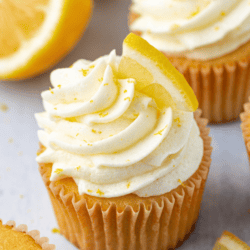
Can you use lemon juice in a bottle as a substitute? It’s suppose to be real organic juice
Yep, you can.